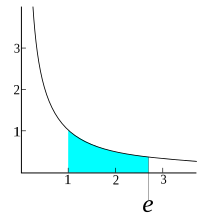
Diverse prebiotic effects of isomaltodextrins with different glycosidic linkages and molecular weights on human gut bacteria in vitro.
Sign Up to like & getrecommendations! Published in 2022 at "Carbohydrate polymers"
DOI: 10.1016/j.carbpol.2021.118986
Abstract: Isomaltodextrin (IMD) is a novel dietary fiber enzymatically produced by reconstructing the molecular chain structure of starch using glycosyltransferases. In this study, the specific prebiotic effects of α-1,6 linear and α-1,2 or α-1,3 branched IMDs… read more here.
Keywords: molecular weights; prebiotic effects; effects isomaltodextrins; mixed fermentation ... See more keywords

Evolution of Aromatic Profile of Torulaspora delbrueckii Mixed Fermentation at Microbrewery Plant
Sign Up to like & getrecommendations! Published in 2020 at "Fermentation"
DOI: 10.3390/fermentation6010007
Abstract: Nowadays, consumers require quality beer with peculiar organoleptic characteristics and fermentation management has a fundamental role in the production of aromatic compounds and in the overall beer quality. A strategy to achieve this goal is… read more here.
Keywords: mixed fermentation; plant; aromatic compounds; delbrueckii mixed ... See more keywords

Differences between Kazak Cheeses Fermented by Single and Mixed Strains Using Untargeted Metabolomics
Sign Up to like & getrecommendations! Published in 2022 at "Foods"
DOI: 10.3390/foods11070966
Abstract: Mixed fermentation improves the flavor quality of food. Untargeted metabolomics were used to evaluate the impact of mixed fermentation and single-strain fermentation on the volatile and non-volatile compound profiles of Kazak cheese. Lacticaseibacillus paracasei SMN-LBK… read more here.
Keywords: smn lbk; untargeted metabolomics; fermentation cheese; mixed fermentation ... See more keywords

Effect of Hanseniaspora uvarum–Saccharomyces cerevisiae Mixed Fermentation on Aroma Characteristics of Rosa roxburghii Tratt, Blueberry, and Plum Wines
Sign Up to like & getrecommendations! Published in 2022 at "Molecules"
DOI: 10.3390/molecules27228097
Abstract: Hanseniaspora uvarum, a non-Saccharomyces cerevisiae species, has a crucial effect on the aroma characteristics of fruit wines, thus, attracting significant research interest in recent years. In this study, H. uvarum–Saccharomyces cerevisiae mixed fermentation was used… read more here.
Keywords: uvarum saccharomyces; saccharomyces cerevisiae; fruit; mixed fermentation ... See more keywords

Optimization of Mixed Fermentation Conditions of Dietary Fiber from Soybean Residue and the Effect on Structure, Properties and Potential Biological Activity of Dietary Fiber from Soybean Residue
Sign Up to like & getrecommendations! Published in 2023 at "Molecules"
DOI: 10.3390/molecules28031322
Abstract: Soybean residue is a by-product of soybean product production that is wasted unreasonably at present. Accomplishing the efficient utilization of soybean residue can save resources. A composite microbial system was constructed using lactic acid bacteria… read more here.
Keywords: dietary fiber; fiber soybean; soybean residue; soybean ... See more keywords